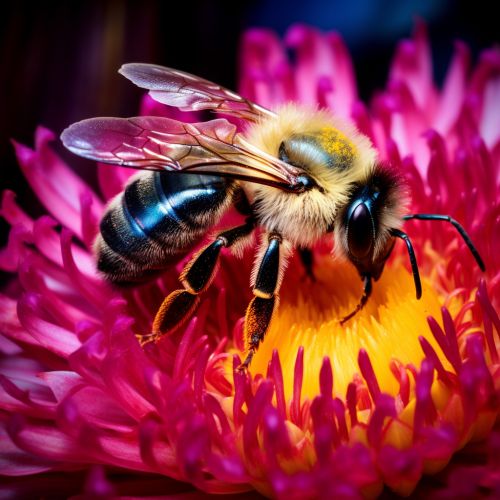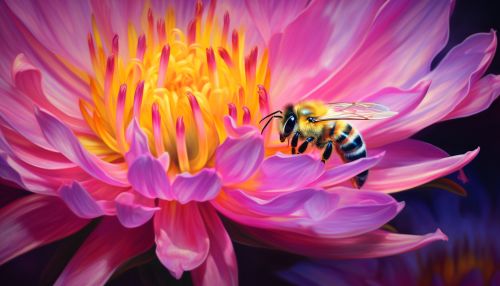Coevolution of Plants and Pollinators
Introduction
Coevolution is a biological concept that refers to the mutual evolutionary influence between two species that interact directly and reciprocally affect each other's evolution. One of the most fascinating examples of coevolution is the relationship between plants and their pollinators. This article delves into the intricate and complex relationship that has developed over millions of years between plants and their pollinators, and how each has influenced the other's evolution.
Evolutionary Background
The coevolution of plants and pollinators is a process that has been ongoing for over 100 million years. The first plants on Earth were likely pollinated by wind or water, but as plants evolved and diversified, so did their methods of pollination. The emergence of flowering plants (angiosperms) in the Cretaceous period marked the beginning of a new era in plant-pollinator relationships.


Mechanisms of Coevolution
Coevolution between plants and pollinators occurs through various mechanisms. The most common mechanism is mutualism, where both the plant and the pollinator benefit from the relationship. The plant benefits from the pollinator's ability to transfer pollen from one flower to another, ensuring fertilization and the production of seeds. The pollinator, in turn, benefits from the nectar or pollen provided by the plant as a food source.
Types of Pollinators
There are many different types of pollinators that have coevolved with plants. These include insects such as bees, butterflies, and moths, as well as birds like hummingbirds and honeyeaters, and even mammals such as bats and marsupials. Each of these pollinators has evolved unique adaptations that allow them to effectively pollinate certain types of plants.
Plant Adaptations
Plants have evolved a wide array of adaptations to attract their preferred pollinators. These adaptations can be morphological, such as the shape, size, and color of the flowers, or they can be biochemical, such as the production of specific scents or nectar. Some plants have even evolved to mimic the appearance or scent of female insects to attract male pollinators.
Pollinator Adaptations
Just as plants have evolved to attract pollinators, pollinators have also evolved adaptations to effectively gather pollen or nectar from plants. These adaptations can be anatomical, such as the length of a hummingbird's beak or the shape of a bee's legs, or they can be behavioral, such as the time of day when a moth is active or the way a bat approaches a flower.
Impacts of Coevolution
The coevolution of plants and pollinators has had profound impacts on the biodiversity and ecological stability of many ecosystems. It has led to the diversification of species, the creation of complex food webs, and the maintenance of ecosystem health. However, changes in one part of the coevolutionary relationship, such as the decline of a particular pollinator species, can have far-reaching effects on the entire ecosystem.
Threats to Coevolutionary Relationships
Unfortunately, many coevolutionary relationships between plants and pollinators are under threat due to human activities. Habitat destruction, climate change, and the introduction of invasive species can disrupt these relationships and lead to declines in both plant and pollinator populations. Understanding and conserving these coevolutionary relationships is crucial for maintaining biodiversity and ecosystem health.
Conservation Efforts
Conservation efforts aimed at preserving the coevolutionary relationships between plants and pollinators are increasingly important. These efforts can take many forms, from protecting natural habitats and implementing sustainable farming practices, to breeding and reintroducing threatened pollinator species. Public education and awareness are also crucial components of these conservation efforts.
